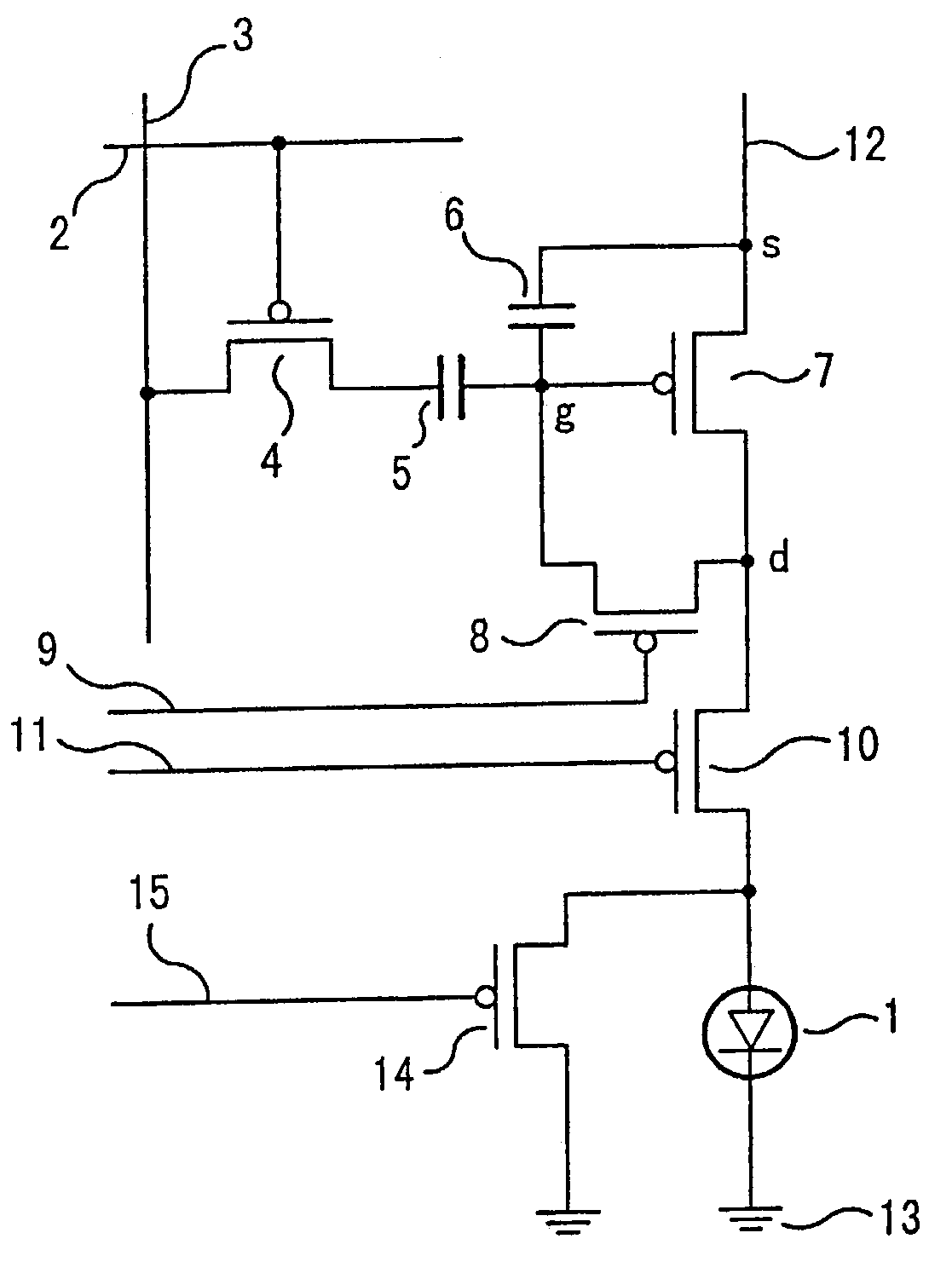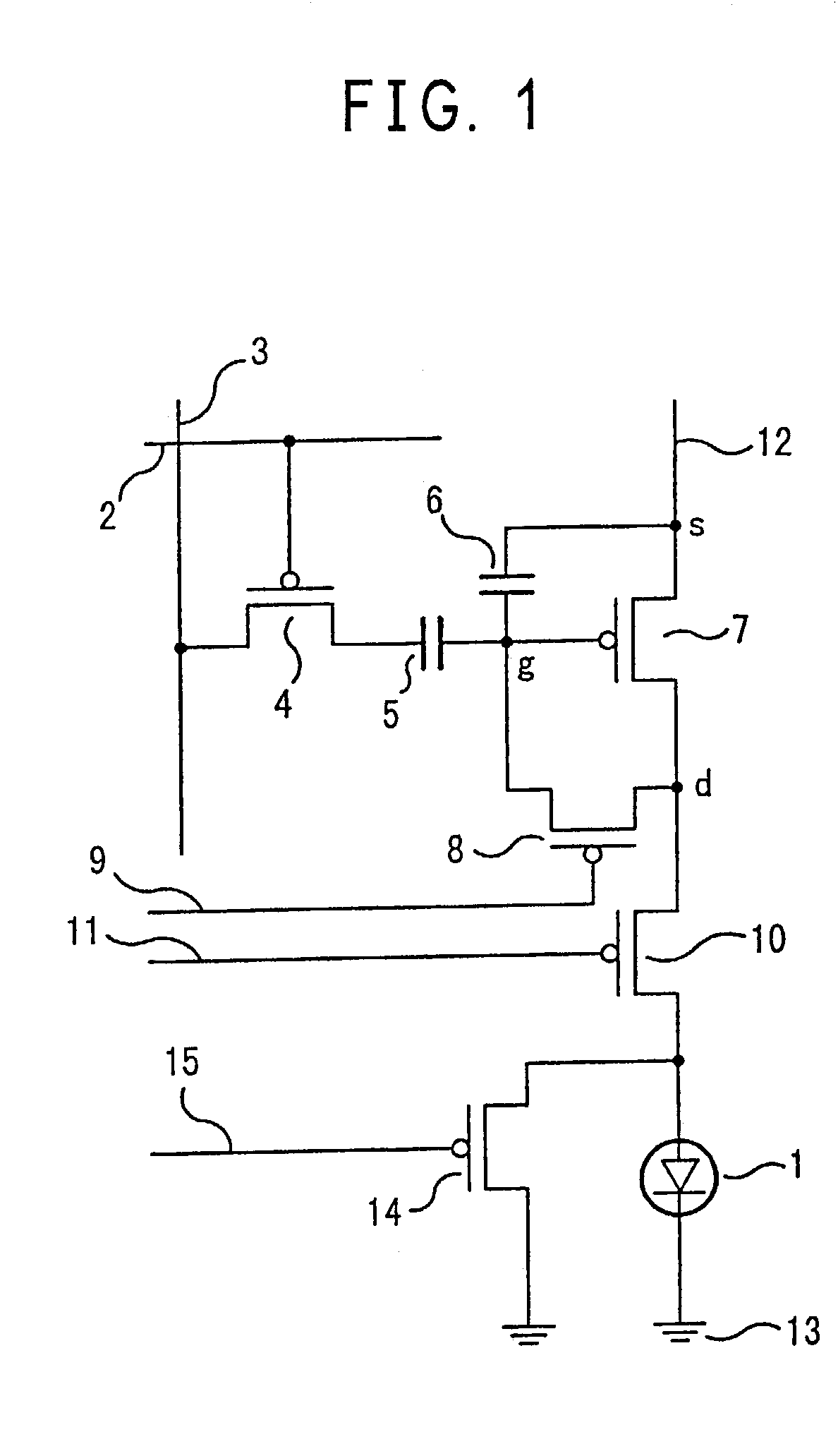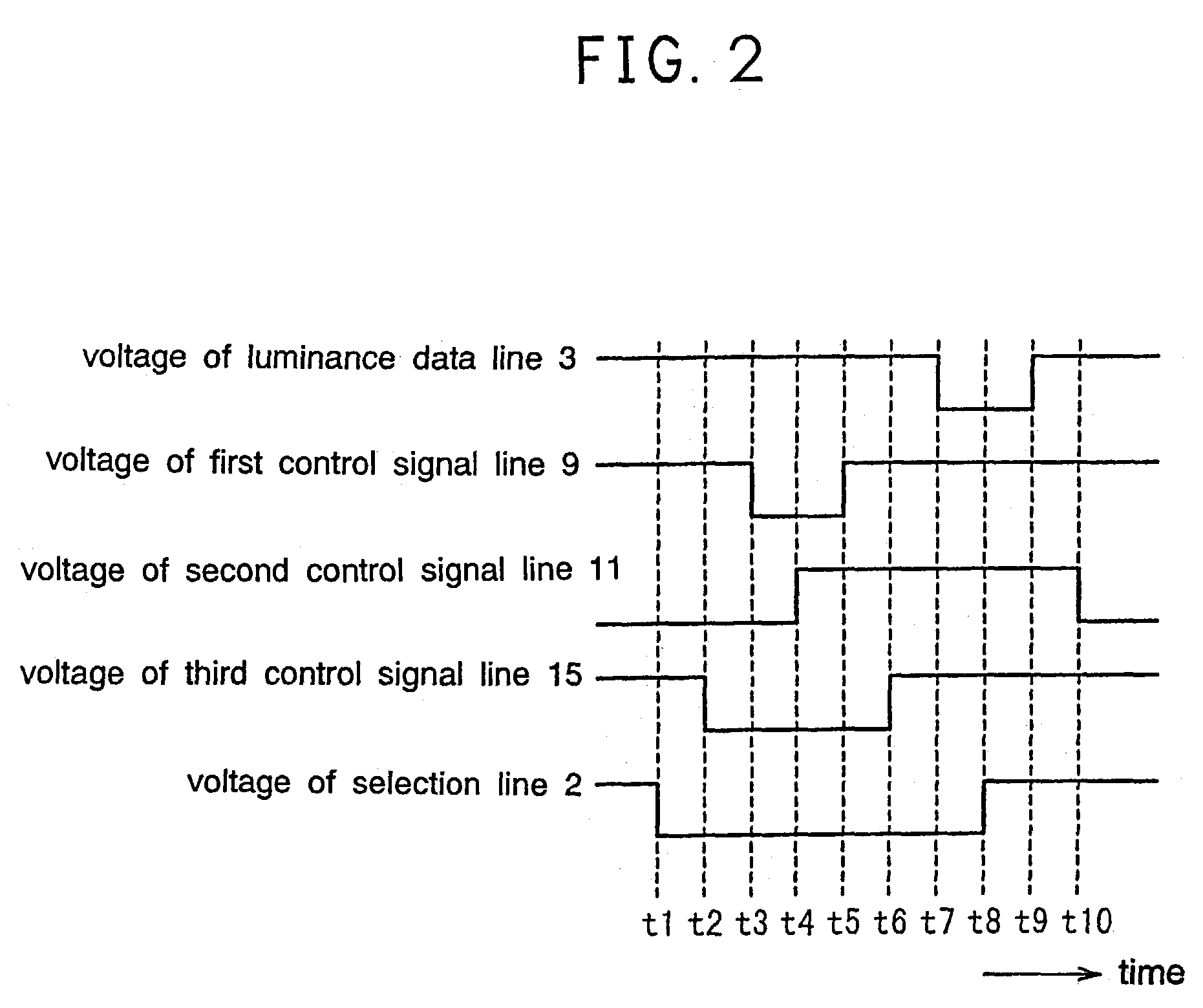Spontaneous light emitting display device
- Summary
- Abstract
- Description
- Claims
- Application Information
AI Technical Summary
Benefits of technology
Problems solved by technology
Method used
Image
Examples
embodiment 1
[0027]FIGS. 1 and 2 are circuit and waveform diagrams showing a driving circuit and a timing for explaining means for suppressing a noise current according to Embodiment 1 of the present invention. More specifically, FIG. 1 is a circuit diagram showing a driving circuit in the case in which a transistor is applied as a switching element and all the transistors are P channel FETs, and FIG. 2 is a waveform diagram showing the operation timing of each signal voltage in FIG. 1. In FIG. 1, reference numerals 1 to 13 indicate the same components as those in FIG. 9. Reference numeral 14 denotes a fifth transistor to be a P channel FET which is connected in parallel with an organic electroluminescence element 1, and reference numeral 15 denotes a third control signal line for supplying a signal voltage to control the fifth transistor 14 into a conduction or non-conduction state. For the luminance data writing period of the driving circuit in the same figure, the transistor 14 is conducted f...
embodiment 2
[0030]FIG. 3 is a circuit diagram for explaining a driving circuit for suppressing a noise current according to Embodiment 2 of the present invention. In FIG. 3, the third control signal line 15 and the selection line 2 in FIG. 1 are shared. The driving circuit shown in FIG. 3 is operated based on a waveform diagram for explaining an operation timing of FIG. 10. A fifth transistor 14 is conducted for a period in which a pixel is selected, and moreover for a period from a time before a third transistor 8 is brought into a conduction state to a time after a fourth transistor 10 is brought into a non-conduction state. Therefore, the same effects as those in Embodiment 1 can be obtained. Furthermore, it is possible to obtain an effect that the number of the signal lines is decreased and a circuit structure can be thereby prevented from being complicated.
embodiment 3
[0031]FIG. 4 is a circuit diagram for explaining a driving circuit to suppress a noise current according to Embodiment 3 of the present invention. In FIG. 4, the third control signal line 15 and the first control signal line 9 in FIG. 1 are shared. The driving circuit in FIG. 4 is operated based on a waveform diagram for explaining an operation timing of FIG. 10. A fifth transistor 14 is conducted for a period in which a pixel is selected, and moreover for a period from a time before a third transistor 8 is brought into a conduction state to a time after a fourth transistor 10 is brought into a non-conduction state. Therefore, the same effects as those in Embodiment 1 can be obtained. Furthermore, it is possible to obtain an effect that the number of the signal lines is decreased and a circuit structure can be thereby prevented from being complicated.
PUM
 Login to View More
Login to View More Abstract
Description
Claims
Application Information
 Login to View More
Login to View More - R&D
- Intellectual Property
- Life Sciences
- Materials
- Tech Scout
- Unparalleled Data Quality
- Higher Quality Content
- 60% Fewer Hallucinations
Browse by: Latest US Patents, China's latest patents, Technical Efficacy Thesaurus, Application Domain, Technology Topic, Popular Technical Reports.
© 2025 PatSnap. All rights reserved.Legal|Privacy policy|Modern Slavery Act Transparency Statement|Sitemap|About US| Contact US: help@patsnap.com



